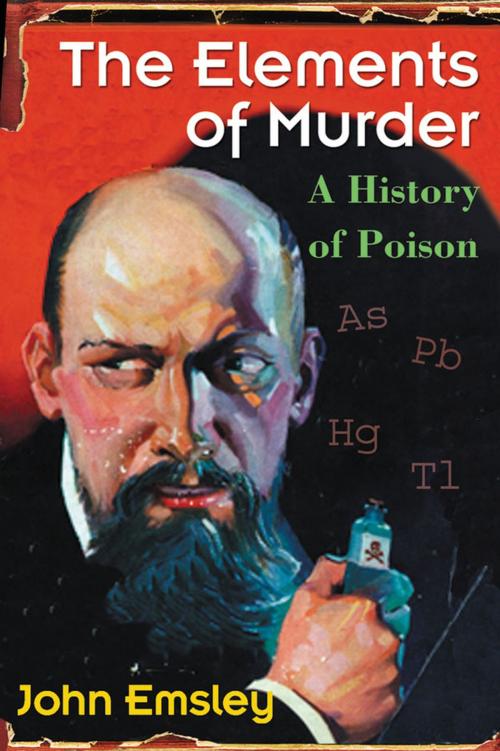The Elements of Murder: A History of Poison
A History of Poison
Nonfiction, Science & Nature, Science, Chemistry, General Chemistry, Social & Cultural Studies, Social Science| Author: | John Emsley | ISBN: | 9780191501203 |
| Publisher: | OUP Oxford | Publication: | April 28, 2005 |
| Imprint: | OUP Oxford | Language: | English |
| Author: | John Emsley |
| ISBN: | 9780191501203 |
| Publisher: | OUP Oxford |
| Publication: | April 28, 2005 |
| Imprint: | OUP Oxford |
| Language: | English |
How can a chemical we need on a daily basis to keep us healthy be fatal at a different dose? Why should elements that are intrinsically dangerous be used in medicine? How did poisoners use the chemical properties of chemicals to cover their tracks? Emsley gives detailed histories of five of the most toxic elements - arsenic, antimony, lead, mercury, and thallium, highlighting some of the most famous murders and how the murderers used the chemical properties of elements to hide what they were doing. He shows how the elements have been behind many modern day environmental catastrophes including accidental mass poisonings from lead and arsenic, and the Minamata Bay Disaster in Japan. The array of fascinating stories shows how chemicals have impacted the lives of people ranging from the Greeks and Romans to Newton, Napoleon, Lucrezia Borgia, Mozart, Nelson Mandela, and Saddam Hussein. Emsley also touches on subjects close to home: cot deaths, laxatives, venereal disease, alleged cures for acne, hangovers, and insanity.
How can a chemical we need on a daily basis to keep us healthy be fatal at a different dose? Why should elements that are intrinsically dangerous be used in medicine? How did poisoners use the chemical properties of chemicals to cover their tracks? Emsley gives detailed histories of five of the most toxic elements - arsenic, antimony, lead, mercury, and thallium, highlighting some of the most famous murders and how the murderers used the chemical properties of elements to hide what they were doing. He shows how the elements have been behind many modern day environmental catastrophes including accidental mass poisonings from lead and arsenic, and the Minamata Bay Disaster in Japan. The array of fascinating stories shows how chemicals have impacted the lives of people ranging from the Greeks and Romans to Newton, Napoleon, Lucrezia Borgia, Mozart, Nelson Mandela, and Saddam Hussein. Emsley also touches on subjects close to home: cot deaths, laxatives, venereal disease, alleged cures for acne, hangovers, and insanity.















